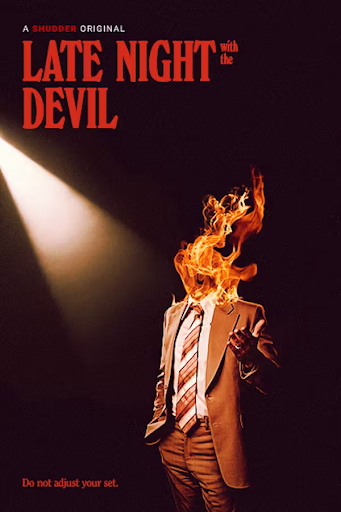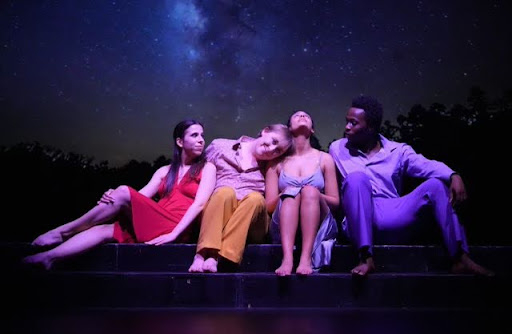TRIP SLAYMAKER ’18
A&E EDITOR
Star Wars has never been more popular. Its imagery and legacy have become totally saturated into our culture: imagery so specific and enduring that even when some small pieces of that universe are presented to us without any context, we recognize them instantly. Even individual sounds, like the thrum of a deadly lightsaber, a trill from John William’s magnificent score, or the clinical breath of a certain helmeted dark lord are enough to instantly call most people back to the Galaxy far, far away. That level of recognition is something that few films other than Star Wars have ever achieved.
The franchise that was born with the 1977 release of Star Wars has remained culturally entrenched since its initial explosive popularity. But then came the release of the Star Wars Prequel Trilogy, all three chapters of which were received with lukewarm reviews in the shadow of the original movies.
Now comes Star Wars: The Force Awakens, a Disney-helmed seventh episode that seeks to return to the slightly gritty texture of Star Wars and continue the story that seemed to end with Return of the Jedi. Episode VII finds Luke Skywalker vanished from the Galaxy just as a remnant of the Empire, the First Order, is arriving to cause destruction. After meeting a small droid called BB-8, a young woman named Rey (Daisey Ridley) and her new ex-Stormtrooper friend Finn (John Boyega) become the sole protectors of the only information that might help stop the growing threat of the reborn Empire: a map to Luke Skywalker, the last of the Jedi Knights.
J.J. Abrams directs with the attention to detail of someone who spent countless teenage hours studying blueprints of star ships, and learning even the minutiae of the Saga. While something of the visual vocabulary of the original films is lost, Abrams does well to intermingle the rich colors and screen wipes that filled Episodes IV-VI with his own adventurous film making style and standard lens flare.
The emotional center of Star Wars feels alive and well again as the new heroes inherit the places of their predecessors. One of the great qualities of Star Wars at its best is the empathy audiences feel toward characters who are swept from the mundane to adventure. Situated between the worlds of science fiction and myth, the central characters of Star Wars make very human mistakes and grow into their characters over time.
The Force Awakens is also lucky to boast such a high-quality cast. Continuing the franchise tradition of using relatively unknown actors to fill major roles, Star Wars seems to strike gold all around. Boyega, Ridley and each of the other new central characters have a natural chemistry and warm vibrancy that is impressive to watch. They also feel fresh: much has been made of the independence and strength of Rey’s character, and rightfully so. She needs no help, and stands apart in skill and daring. But more than that, her character also avoids so many of the tropes of so many weakly written central characters who are female: Rey is not detached, sexualized or used as a bargaining chip. That’s something to take note of when one remembers that the entire original Star Wars trilogy featured perhaps three speaking roles for women- in total.
The major audience points are scored, though, not by the arrival of even these very cool new characters but by the return of a few old ones. Harrison Ford’s still scruffy-looking Han Solo steals the spotlight in his return to the role that has followed him for the past forty years, and it’s lovely to see him share a scene or two with Carrie Fisher’s Princess Leia, now the General of the Resistance. The Force Awakens knows exactly how and when to allow these characters on screen. The film’s writers understood that to place any one of the original characters too directly into the thick of the plot would overshadow the actions of the new generation. So they are kept at a distance, and in a bold move, Mark Hamill’s Luke Skywalker is used as a McGuffin and does not appear until the last possible moment.
The powerhouse and central figure of all six previous films is absent from this latest installment: Darth Vader is still dead. But his enthusiasm for choking people lives on in the angsty and merciless Kylo Ren (Adam Driver). Ren makes for an intriguing villain, and while he falls short of the hulking dread of Darth Vader, he brings the same internal conflict to the role, not to mention a very similar helmet.
But how much homage can be allowed? Seeing these things of the past return to the screen is a usually gift, as when the Millennium Falcon hurdles through space again, and a red sunset hangs over an alien desert. But there are times when The Force Awakens steps just over the line, and crosses the line from emulation to imitation. As Oscar Isaac’s Poe Dameron fires a blast from his X-Wing fighter into Starkiller Base, It’s difficult not to feel that you’ve seen this before, not once but twice.
Then again, how else do you make a follow up of Star Wars without drawing directly from the source? Star Wars was a flashpoint moment in the late 1970’s that struck a chord with an enormous number of people, echoed in the childhood memories of an entire generation. For this reason, Star Wars: The Force Awakens is a movie based in sentiment, but it also manages to keep its own individuality intact. Star Wars: The Force Awakens will play at Cinestudio April 21-23.
Sunday, May 12 2024
The Student Newspaper at Trinity College in Hartford, Connecticut








+ There are no comments
Add yours